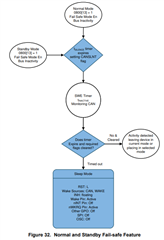Other Parts Discussed in Thread: TCAN4550, ISO1044,
Hello!
We are using tcan4551 part with an external transceiver. I put the tcan part in test mode(controller mode) and things seem to be working fine when I power on the device.
However, when I disconnect the device from network and reconnect it back, it looks like tcan4551 is in some state, I don't see any interrupts generated(interrupt line stays high), no SPI communication.
Disconnecting the device from the network removes power to the external transceiver, but the tcan4551 is still powered on continuously.
Since tcan4551 is not running in normal mode but in test mode, does it enter a different state under these conditions?
Also, if I disconnect and reconnect immediately(less than 5 seconds or so) things seem to be working fine. But if I wait for may be 10 seconds or so and then try to reconnect, communication is not established with the network.
Any suggestions on what is going on with the tcan part?
Thanks!


